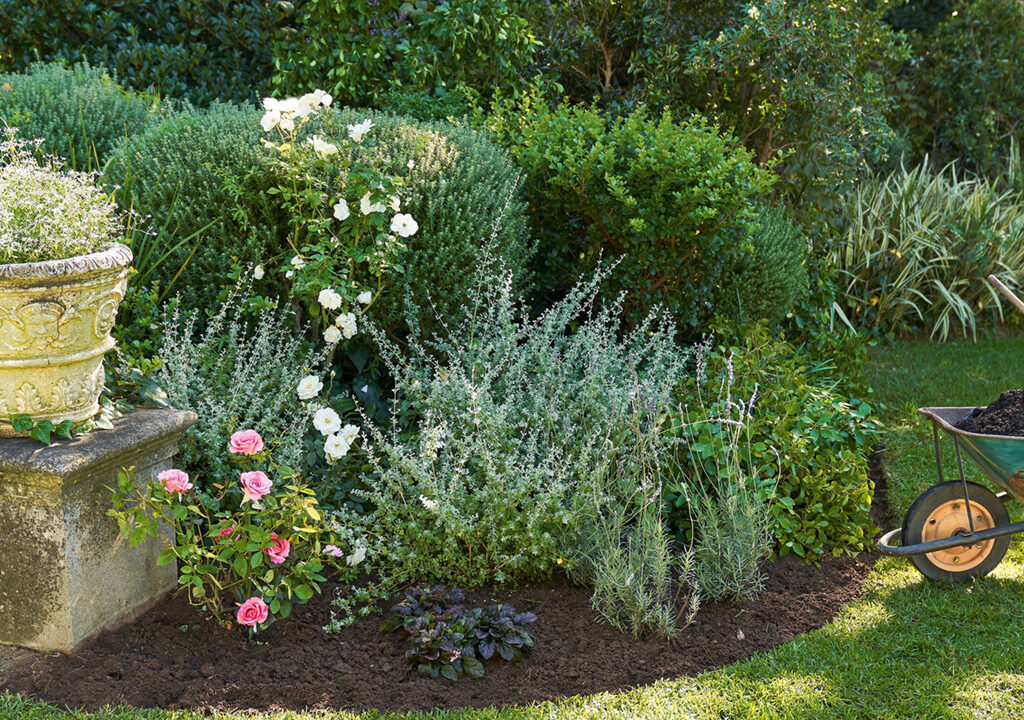Starting a garden from scratch might seem a little overwhelming at first, but with the right steps and a touch of patience, you can turn a bare patch of land into a lush, thriving green space. Whether you’re dreaming of a flower-filled paradise, a kitchen herb patch, or a bountiful vegetable plot, this guide will walk you through how to plant a garden from scratch—the right way.
Let’s dig in (literally)!

Why Start a Garden?
Gardening isn’t just about aesthetics — it’s about creating a space that brings you peace, fresh air, and sometimes even food. A well-planned garden can:
- Add value and beauty to your home
- Provide fresh, organic produce
- Offer a relaxing hobby
- Attract beneficial insects and birds
- Improve air quality
And perhaps most importantly, it offers the satisfaction of nurturing something from the ground up — quite literally.

What Type of Garden Do You Want?
Before you grab your shovel, think about what kind of garden you’d like to create. Your choice will guide everything from the layout to the plants you choose.
Popular Garden Types:
- Flower garden: For color, fragrance, and seasonal beauty.
- Vegetable garden: For fresh, homegrown produce.
- Herb garden: Perfect for cooking enthusiasts.
- Pollinator garden: Attracts bees, butterflies, and birds.
- Mixed garden: A combination of flowers, herbs, and veggies.
Decide on your garden type based on your space, climate, and how much time you’re willing to invest in maintenance.

Step-by-Step Guide: How to Plant a Garden from Scratch
Step 1: Choose the Right Location
A garden’s success depends on its location. Observe your yard or outdoor space for a few days to determine:
- Sun exposure: Most plants need 6–8 hours of direct sunlight.
- Shade areas: For shade-tolerant plants like ferns or hostas.
- Soil quality: Well-draining, nutrient-rich soil is ideal.
- Proximity to water: You’ll need easy access to a water source.
Pro Tip: Avoid low-lying areas prone to waterlogging or spots too close to large trees that can block light and steal nutrients.
Step 2: Plan Your Garden Layout
Sketch a rough layout of your desired garden space. Mark out:
- Flower beds or vegetable rows
- Paths or stepping stones
- Borders or fences
- Placement of taller vs. shorter plants
Consider spacing needs, mature plant sizes, and aesthetic flow. Garden planning apps or simple graph paper drawings can help visualize the space.
Step 3: Prepare the Soil
Good soil is the foundation of a healthy garden. Follow these steps to prepare your ground:
- Clear the Area: Remove grass, weeds, rocks, and debris.
- Loosen the Soil: Use a shovel, hoe, or rototiller to turn over the top 8–12 inches of soil.
- Amend the Soil: Mix in organic matter like compost, aged manure, or peat moss to improve fertility and drainage.
- Test the pH: Ideally, garden soil should be between 6.0 and 7.0 for most plants. Use a home testing kit and adjust accordingly with lime (to raise pH) or sulfur (to lower it).
Step 4: Choose Your Plants Wisely
Select plants suited to your region’s climate, your garden’s sun exposure, and your soil conditions.
Consider:
- Hardiness zone: Check the USDA Plant Hardiness Zone Map or your country’s equivalent.
- Blooming/harvest time: Mix early, mid, and late-season plants for year-round interest.
- Plant heights: Place taller plants at the back or center, with shorter ones at the edges.
- Color and texture: Blend different colors, leaf shapes, and flower forms for visual appeal.
Visit local nurseries or garden centers for region-appropriate plants and expert advice.
Step 5: Start Planting
Now for the fun part — planting! Here’s how to do it properly:
- Follow plant spacing guidelines on seed packets or plant tags.
- Dig a hole twice as wide as the plant’s root ball but no deeper.
- Gently loosen roots before placing the plant in the hole.
- Backfill with soil and press down gently to eliminate air pockets.
- Water thoroughly right after planting.
For seeds:
- Read packet instructions for sowing depth and spacing.
- Water gently to avoid displacing seeds.
- Keep soil consistently moist until seeds sprout.

Essential Garden Care Tips
After planting, your garden will need regular attention to thrive.
Watering
- Water early in the morning or late in the evening.
- Most plants prefer about 1 inch of water per week.
- Avoid wetting the leaves to prevent fungal diseases.
Mulching
Spread organic mulch (like shredded bark, straw, or leaves) around your plants to:
- Retain soil moisture
- Suppress weeds
- Regulate soil temperature
- Add nutrients as it decomposes
Fertilizing
Use a balanced, slow-release fertilizer in spring and again mid-season. Avoid over-fertilizing, which can burn roots and encourage weak, leafy growth.
Pruning and Deadheading
Remove dead or faded flowers (deadheading) to encourage more blooms. Prune back leggy or unhealthy stems to promote bushier growth.
Pest and Disease Management
Inspect plants regularly for signs of pests or diseases. Treat early with organic solutions like neem oil, insecticidal soap, or by removing affected parts.
Common Mistakes to Avoid
- Planting too close together: Leads to overcrowding and poor air circulation.
- Ignoring soil preparation: Plants struggle in poor-quality soil.
- Overwatering or underwatering: Both can harm plants.
- Choosing the wrong plants for your climate: Some plants won’t thrive outside their preferred conditions.
- Forgetting about maintenance: Gardens need regular care to stay healthy.
When Will You See Results?
Patience is key in gardening. Here’s a rough timeline:
- Annual flowers: Bloom within a few weeks to months.
- Vegetables: Harvest times vary by type (lettuce in 30 days, tomatoes in 60–90 days).
- Perennials and shrubs: May take a season or two to mature.
- Trees: Often take several years to grow significantly.
Final Thoughts
Planting a garden from scratch is one of the most rewarding projects you can take on. It teaches patience, brings beauty to your surroundings, and connects you to the rhythms of nature. With careful planning, a little elbow grease, and regular care, you’ll soon enjoy a garden that blooms and flourishes season after season.
So grab those gloves, dust off your shovel, and start turning that patch of earth into a space you’ll love!





Leave A Comment